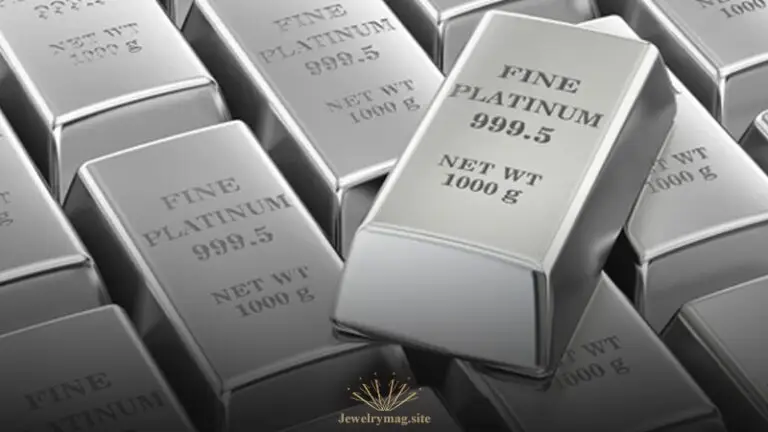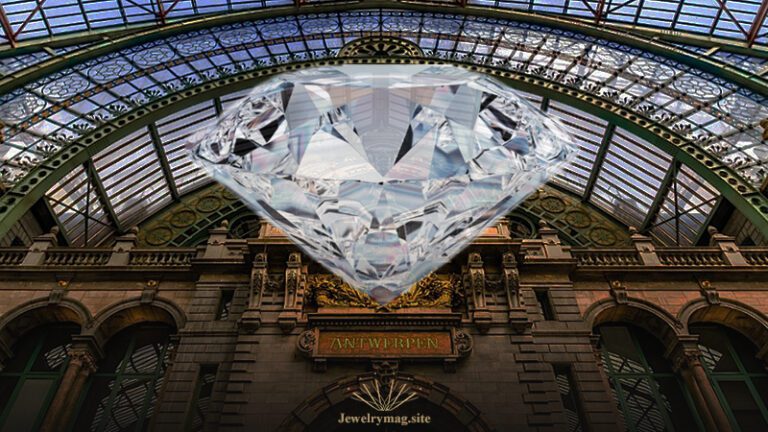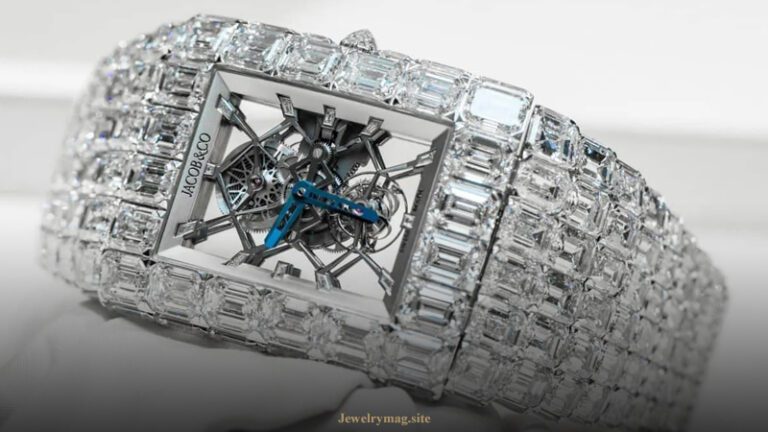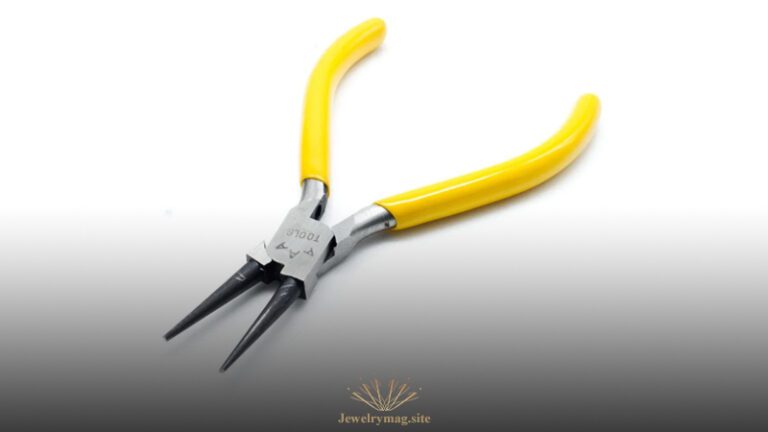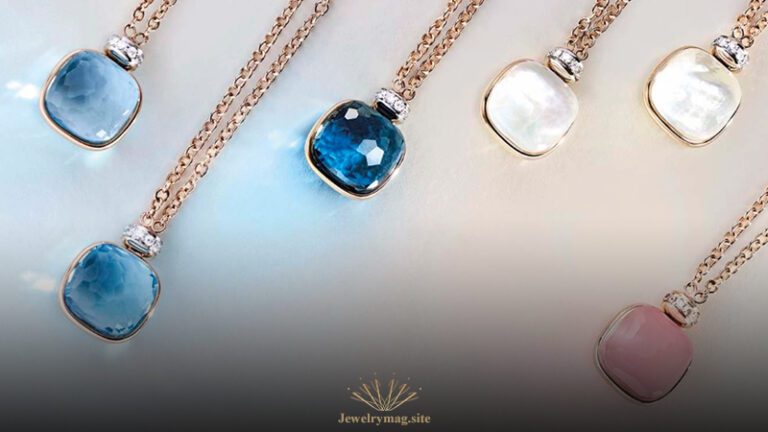Precious metals have long been valued for their beauty, rarity, and utility in various industries. Among these metals, platinum and palladium stand out for their unique properties, diverse applications, and significant roles in the global economy. While both belong to the platinum group metals (PGMs), they have distinct characteristics that set them apart. This article delves into the differences and similarities between platinum and palladium, exploring their physical and chemical properties, industrial applications, market trends, and investment potential.
Platinum vs. Palladium
1.Platinum vs. Palladium, Physical and Chemical Properties
Platinum and palladium share several similarities due to their place in the same group on the periodic table. However, they also have notable differences in their physical and chemical properties.
Platinum:
Platinum is a dense, malleable, ductile metal with a silvery-white luster. It is one of the heaviest metals, with a density of 21.45 g/cm³, making it about 60% denser than palladium. Platinum is highly resistant to corrosion and oxidation, even at high temperatures, which makes it extremely durable. It has a melting point of 1,768°C (3,214°F) and a boiling point of 3,825°C (6,917°F). Chemically, platinum is relatively inert, showing little reactivity with most substances. This stability makes it ideal for use in environments where corrosion resistance is essential.
Palladium:
Palladium, in contrast, is less dense than platinum, with a density of 12.02 g/cm³. It is also more malleable and ductile, allowing it to be used in thin coatings or as an alloying metal. Palladium has a lower melting point of 1,554°C (2,829°F) and a boiling point of 2,963°C (5,365°F). Like platinum, palladium is resistant to corrosion and oxidation but to a slightly lesser degree. Palladium is known for its ability to absorb hydrogen, which is a unique property among the platinum group metals, and this has specific implications for its industrial applications.
2.Platinum vs. Palladium, Industrial Applications
The industrial uses of platinum and palladium are diverse, with both metals playing crucial roles in automotive, electronics, and jewelry sectors, among others. However, their applications differ based on their distinct properties.
Platinum:
Platinum’s high melting point and excellent catalytic properties make it indispensable in several industries. The automotive industry is the largest consumer of platinum, where it is used in catalytic converters to reduce harmful emissions from vehicles. Platinum catalysts are particularly effective in diesel engines, where they help convert carbon monoxide, hydrocarbons, and nitrogen oxides into less harmful carbon dioxide, water, and nitrogen.
In addition to automotive applications, platinum is also used in the chemical industry for producing nitric acid, silicone, and benzene, among other chemicals. It serves as a catalyst in petroleum refining processes and in the production of fertilizers and explosives. Platinum is also utilized in the medical field, particularly in the manufacture of pacemakers, dental crowns, and cancer treatment drugs such as cisplatin.
The jewelry industry is another significant consumer of platinum. Its luster, durability, and resistance to tarnish make it a preferred choice for high-end jewelry, especially engagement rings and wedding bands. Platinum’s rarity and prestige also add to its appeal as a luxury item.
Palladium:
Palladium’s most significant use is also in the automotive industry, where it is employed in catalytic converters, especially for gasoline engines. Palladium is highly efficient in converting harmful pollutants into less harmful emissions, making it essential for meeting stringent environmental regulations. As gasoline engines have become more prevalent globally, the demand for palladium in catalytic converters has surged.
In electronics, palladium is used in the production of multilayer ceramic capacitors (MLCCs), which are vital components in many electronic devices, including smartphones, computers, and automotive electronics. Palladium’s excellent conductivity and resistance to corrosion make it ideal for these applications.
The jewelry industry also uses palladium, although to a lesser extent than platinum. Palladium is often alloyed with gold to create white gold, giving the metal a bright white finish without the need for rhodium plating. In recent years, palladium has gained popularity as a standalone material for wedding bands due to its lower cost and lighter weight compared to platinum.
3.Platinum vs. Palladium, Market Trends and Supply Dynamics
The market dynamics of platinum and palladium are influenced by various factors, including supply, demand, geopolitical issues, and technological advancements. Understanding these factors is crucial for investors and industries that rely on these metals.
Platinum Market Trends:
Platinum is primarily mined in South Africa, which accounts for over 70% of global production. Russia is another significant producer, with smaller contributions from North America and Zimbabwe. The concentration of platinum mining in a few regions makes the market vulnerable to geopolitical and labor disruptions, which can lead to supply constraints and price volatility.
In recent years, the platinum market has faced challenges due to declining demand from the automotive industry, particularly in diesel engines, where platinum is the primary catalyst. The shift towards electric vehicles (EVs) and stricter emissions standards for diesel engines have reduced the demand for platinum. However, the metal’s role in hydrogen fuel cells, which are considered a future alternative to traditional internal combustion engines, presents a potential growth area.
Jewelry demand for platinum has been stable but faces competition from other metals, particularly gold and palladium. The economic slowdown and changing consumer preferences have also impacted the jewelry sector’s demand for platinum.
Palladium Market Trends:
Palladium’s market dynamics have been shaped by the increasing demand from the automotive industry, particularly for gasoline engines. The rise of gasoline-powered vehicles, especially in China and the United States, has driven up palladium demand, leading to significant price increases in recent years.
Palladium is predominantly mined in Russia, which accounts for about 40% of global production, and South Africa. North America also contributes to palladium supply, with the United States and Canada being notable producers. Like platinum, palladium’s supply is concentrated in a few regions, making it susceptible to geopolitical risks.
One of the most critical challenges facing the palladium market is the possibility of a supply deficit. As demand continues to outstrip supply, prices have soared, making palladium one of the most expensive precious metals. This has led to concerns about the sustainability of current supply levels and the potential for substitution by other metals, including platinum, in catalytic converters.
4.Platinum vs. Palladium, Investment Potential
Investing in platinum and palladium can be lucrative, but it requires an understanding of the market’s complexities and the factors that influence prices. Both metals are traded on commodity exchanges, and investors can gain exposure through physical bullion, exchange-traded funds (ETFs), or mining stocks.
Platinum as an Investment:
Platinum has traditionally been viewed as a valuable investment, often seen as a hedge against inflation and economic uncertainty. However, its price performance has been relatively subdued in recent years compared to other precious metals like gold and palladium. This is largely due to declining demand from the automotive industry and competition from palladium.
Despite these challenges, platinum has the potential for price recovery, particularly if hydrogen fuel cell technology gains traction. The growing interest in green energy and the need for sustainable alternatives to fossil fuels could drive future demand for platinum. Additionally, the metal’s limited supply and geopolitical risks in major producing regions could lead to supply constraints, further supporting prices.
Investors interested in platinum should consider its long-term potential, particularly in the context of the global transition to renewable energy. Physical platinum, ETFs, and stocks of platinum mining companies are common ways to invest in this metal.
Palladium as an Investment:
Palladium has outperformed many other precious metals in recent years, driven by strong demand from the automotive industry and supply constraints. The metal’s price has surged, making it an attractive investment for those seeking exposure to the automotive sector and industrial growth.
However, investing in palladium comes with its own set of risks. The high prices have raised concerns about demand destruction, where consumers seek cheaper alternatives, such as platinum. Additionally, the potential for new technologies, such as electric vehicles, to reduce the demand for palladium in catalytic converters could impact prices in the long term.
Palladium investors should closely monitor developments in the automotive industry and be aware of the potential for substitution by other metals. Physical palladium, ETFs, and mining stocks are common investment vehicles for this metal.
5.Platinum vs. Palladium, Environmental and Ethical Considerations
The mining and use of platinum and palladium raise important environmental and ethical issues. Both metals are mined in regions with complex social and environmental challenges, and their extraction can have significant impacts on local communities and ecosystems.
Environmental Impact:
Platinum and palladium mining involves extensive environmental disruption, including habitat destruction, water pollution, and greenhouse gas emissions. The energy-intensive nature of mining and refining these metals contributes to their environmental footprint. In addition, the disposal of catalytic converters and electronic waste containing these metals can lead to environmental contamination if not properly managed.
The automotive industry’s shift towards electric vehicles and hydrogen fuel cells is partly driven by the need to reduce the environmental impact of traditional internal combustion engines. While platinum and palladium play crucial roles in reducing vehicle emissions, the metals themselves must be sourced and used responsibly to minimize their environmental impact.
Ethical Concerns:
The ethical implications of platinum and palladium mining are significant, particularly in regions with weak governance and labor standards. In some areas, mining operations have been associated with human rights abuses, poor working conditions, and negative impacts on local communities. For example, in South Africa, where much of the world’s platinum is mined, labor disputes and safety concerns have been ongoing issues.
Investors and consumers are increasingly aware of these ethical considerations and are demanding greater transparency and responsibility from mining companies. Ethical sourcing initiatives and certifications, such as the Responsible Jewellery Council (RJC) and the London Bullion Market Association (LBMA), aim to ensure that platinum and palladium are mined and traded in a manner that respects human rights and environmental standards.
Conclusion
Platinum and palladium are two of the most important precious metals, with diverse applications across various industries. While they share some similarities, their differences in physical properties, industrial uses, market dynamics, and investment potential make them unique.
Platinum’s strength lies in its durability, high melting point, and resistance to corrosion, making it indispensable in industrial applications, particularly in catalytic converters for diesel engines and in the chemical industry. Its role in the emerging hydrogen economy presents potential future growth opportunities.
Palladium, on the other hand, has seen its demand soar in recent years due to its critical role in catalytic converters for gasoline engines. Its lower density and unique ability to absorb hydrogen make it valuable in other industries, such as electronics.
Both metals face challenges and opportunities in the coming years. The transition to greener technologies, changes in the automotive industry, and ethical considerations will all play a role in shaping the future of platinum and palladium.
For investors, understanding the complexities of these markets is essential. While palladium has shown strong performance, platinum’s potential in emerging technologies and its historical role as a store of value make it a metal worth watching. As the global economy continues to evolve, both platinum and palladium will remain key players in the industrial and financial landscapes.
FAQs about Palladium & Platinum
Which is better, platinum or palladium?
Determining whether platinum or palladium is “better” depends on the context in which you’re comparing them. Both metals have unique properties and applications, so the answer varies depending on your priorities—whether they are industrial use, investment, or personal preferences.
Is palladium worth more than platinum?
Yes, palladium has been worth more than platinum for several years now, although prices for both metals can fluctuate based on market conditions. This price difference is largely driven by supply and demand dynamics, particularly in the automotive industry.
Reasons Palladium Is Currently Worth More Than Platinum:
- High Demand in Automotive Industry:
- Palladium is heavily used in catalytic converters for gasoline engines, which are more common globally than diesel engines that use platinum. As regulations on vehicle emissions have tightened, the demand for palladium in these converters has surged.
- Supply Constraints:
- Palladium’s supply is more limited compared to platinum, with major production concentrated in Russia and South Africa. Any disruptions in these regions can lead to significant price increases. The supply-demand imbalance has contributed to the metal’s higher price.
- Substitution Resistance:
- Although platinum can technically substitute for palladium in catalytic converters, the transition isn’t straightforward. Manufacturers have been slow to switch due to technical challenges and costs, which has sustained high demand for palladium.
- Investment and Speculation:
- The significant rise in palladium prices has also been fueled by investors speculating on its continued scarcity and high demand. This speculative interest has further pushed up prices.
Historical Context:
- Platinum Was Historically More Expensive: For many decades, platinum was more valuable than palladium due to its rarity, industrial applications, and status as a luxury metal in jewelry. However, the shift in automotive technology and the decline in diesel engine popularity reversed this trend.
- Recent Price Trends: Over the past few years, palladium has consistently traded at a higher price than platinum. As of recent years, palladium’s price per ounce has often been significantly higher than that of platinum.
Current Situation:
As of the latest market data, palladium continues to trade at a premium over platinum. However, this situation could change if factors like a shift in automotive technology, an increase in platinum demand for hydrogen fuel cells, or an increase in palladium production were to occur.
In summary, yes, palladium is currently worth more than platinum due to its strong demand and limited supply, especially in the automotive sector.
Why is palladium not used in jewelry?
Palladium is used in jewelry, but it is less common than other metals like gold and platinum for several reasons. Here’s why palladium is not as widely used in jewelry:
1. Relative Rarity in Jewelry Market
- Market Preferences: Platinum and gold have long been the preferred choices for fine jewelry due to their historical significance, luxury status, and established consumer recognition. Palladium, although valuable, doesn’t have the same long-standing association with high-end jewelry.
- Awareness and Tradition: Platinum and gold have been marketed as the premier metals for luxury jewelry, particularly for engagement rings and wedding bands. Palladium, by contrast, has not been as heavily promoted or marketed in the jewelry industry, making it less well-known among consumers.
2. Cost and Economic Factors
- Cost Volatility: Palladium prices have become increasingly volatile and higher than platinum in recent years, which makes it less attractive for widespread use in jewelry. Jewelers typically prefer materials with more stable pricing to maintain consistent production costs and pricing strategies.
- Production and Processing Costs: While palladium is less dense and easier to work with than platinum, the high market price can offset these advantages. The increased cost may deter consumers from choosing palladium over other, more established metals like gold or platinum.
3. Physical Properties
- Malleability and Workability: Palladium is malleable and ductile, making it suitable for jewelry crafting. However, it is not as hard or dense as platinum, which means it might not be as durable for daily wear, particularly in settings that require the metal to hold gemstones securely.
- Color and Finish: Palladium has a natural white color, which is an advantage in creating white gold alloys and as a standalone metal. However, its appearance is similar to platinum, which is already established as the premier white metal in luxury jewelry. Consumers often choose platinum over palladium due to its heavier feel and perceived value.
4. Durability Concerns
- Scratch Resistance: Palladium is less dense and softer than platinum, meaning it can scratch more easily. For daily wear jewelry, like wedding bands, this can be a disadvantage as consumers often prefer metals that are highly resistant to wear and tear.
- Weight and Feel: Palladium is lighter than platinum, which some consumers might perceive as less substantial. Platinum’s heavier weight is often associated with luxury and durability, making it more desirable for high-end jewelry.
5. Alloy Use
- White Gold Alloys: Palladium is more commonly used as an alloying metal in white gold to give it a white finish without the need for rhodium plating. In this context, palladium plays an important but supporting role, rather than being the primary metal.
- Rhodium Alternative: Palladium is sometimes used as an alternative to rhodium in coatings or as an alloy, but it rarely stands alone as the main material in fine jewelry pieces.
6. Consumer Perception and Market Positioning
- Perceived Value: Platinum and gold have established themselves as the ultimate luxury metals, with a perception of timeless value. Palladium, while valuable, lacks this perception and is not seen as being in the same league as these traditional metals.
- Branding and Marketing: The jewelry market is heavily influenced by branding, and palladium has not been marketed as aggressively as platinum or gold. This lack of strong brand association has kept it from becoming a more prominent choice.
Is platinum expensive than gold?
Yes, platinum has historically been more expensive than gold, but this is not always the case. The relative prices of platinum and gold can fluctuate based on various market factors, including supply, demand, economic conditions, and investor sentiment.

